How to Compost Your Kitchen Scraps
Composting is not just a trend; it’s a lifestyle choice that can significantly impact your garden and the environment. Imagine transforming your kitchen scraps—those seemingly useless leftovers—into rich, fertile soil that nourishes your plants and helps them thrive. Composting your kitchen scraps is a fantastic way to reduce waste while enhancing the health of your garden. Not only does it allow you to recycle organic materials, but it also saves you money on fertilizers and contributes to a more sustainable planet. So, how do you get started? Let's dive into the world of composting and discover the effective methods that will turn your kitchen waste into a gardener's gold!
At its core, composting is a natural process that recycles organic matter, such as kitchen scraps and yard waste, into a valuable soil amendment. It’s like nature’s way of recycling! When you compost, you harness the power of microorganisms, worms, and other decomposers to break down organic materials into nutrient-rich compost. This process involves a few fundamental principles: moisture, aeration, and the right mix of materials. Think of it as a recipe—without the right ingredients and conditions, you won’t get the desired outcome. By understanding these basics, you can create a thriving compost pile that will yield amazing results for your garden.
Composting kitchen scraps offers a treasure trove of benefits that reach far beyond your garden. First and foremost, it helps reduce the amount of waste you send to landfills. Did you know that food waste is one of the largest contributors to landfill mass? By composting, you are not only minimizing your waste footprint but also playing a vital role in environmental conservation. Let’s break it down:
When you toss your kitchen scraps into the trash, they end up in a landfill where they decompose anaerobically, producing methane—a potent greenhouse gas. By composting, you can significantly decrease the volume of waste that goes to landfills, helping to mitigate these harmful emissions. Imagine the impact if every household committed to composting! It’s like a ripple effect, where each small action contributes to a larger change.
Landfills are not just ugly; they are a major environmental concern. As organic materials decompose in landfills, they release methane, which is about 25 times more effective than carbon dioxide at trapping heat in the atmosphere over a 100-year period. This means that composting is not just beneficial for your garden, but it also helps combat climate change. By choosing to compost, you are making a conscious decision to protect our planet for future generations.
When you compare composting to traditional waste disposal methods, the benefits become even clearer. While throwing everything in the trash might seem easier, composting provides long-term advantages that are hard to ignore. Not only do you reduce landfill waste, but you also create a sustainable cycle of nutrients that enriches your soil. It’s like planting a seed of change that grows into a lush garden. So, why not embrace composting as a more responsible waste management solution?
One of the most rewarding aspects of composting is how it enhances soil health. Compost is packed with essential nutrients that plants crave. When you add compost to your garden, you’re not just feeding the plants; you’re improving the soil structure, increasing its ability to retain moisture, and promoting beneficial microbial activity. Think of compost as a multivitamin for your garden—it boosts the overall health and vitality of your plants. The result? A flourishing garden that thrives in harmony with nature.
Not all kitchen scraps are created equal when it comes to composting. To achieve the best results, it’s crucial to know which materials to include and which to avoid. Generally, kitchen scraps can be categorized into two types: green materials and brown materials. Green materials are rich in nitrogen, while brown materials are high in carbon. A good balance between these two types is essential for effective composting.
To create a successful compost pile, aim for a ratio of about 2:1 of brown to green materials. This balance helps ensure that the compost pile heats up adequately, promoting faster decomposition. Some examples of green materials include:
- Fruit and vegetable scraps
- Coffee grounds
- Grass clippings
On the other hand, brown materials include:
- Dried leaves
- Cardboard
- Pine needles
By mixing these materials properly, you’ll create an ideal environment for decomposition, leading to high-quality compost.
When it comes to kitchen scraps, some items are perfect for composting. Fruits and vegetables are great, but did you know that coffee grounds are also an excellent addition? They not only provide nitrogen but also help improve soil structure. Other common scraps include eggshells, which add calcium, and even small amounts of paper towels or napkins. However, be cautious—some items, like meat and dairy, should be avoided as they can attract pests.
If you’re new to composting, don’t worry! There are several beginner-friendly methods that make it easy to start composting kitchen scraps effectively. Whether you have a large backyard or just a small balcony, there’s a method that will work for you.
Using a compost bin is one of the most popular methods for managing kitchen scraps. It keeps your compost contained and can be easily maintained. To set up a compost bin, choose a location that gets some sunlight and is easily accessible. Layer your greens and browns, and remember to turn the pile every few weeks to aerate it. This will speed up the decomposition process and keep your compost healthy.
If you’re looking for a unique and efficient way to compost, consider vermicomposting! This method uses worms to break down organic matter. You can set up a vermicomposting system in a bin, and the worms will do the hard work for you. Plus, they produce nutrient-rich worm castings that are fantastic for your plants. It’s like having a tiny army of composters working tirelessly in your home!
Once you’ve set up your compost pile or bin, the work isn’t over. Regular maintenance is key to successful composting. Monitoring your compost will ensure it decomposes efficiently and stays healthy.
Turning your compost pile is essential for aeration. It helps to speed up the decomposition process by introducing oxygen to the microorganisms working in your compost. Aim to turn your pile every couple of weeks, or whenever you notice it starting to smell or become compacted. Think of it as giving your compost a little workout—it needs movement to thrive!
Maintaining the right moisture level is crucial for composting success. Your compost should feel like a damp sponge—moist but not soggy. If it’s too dry, the decomposition process will slow down; if it’s too wet, it can become anaerobic and smelly. If you notice your compost is too dry, add some water or green materials; if it’s too wet, add more brown materials to soak up the moisture.
Q: Can I compost meat and dairy?
A: It's best to avoid composting meat and dairy as they can attract pests and create odors.
Q: How long does it take for compost to be ready?
A: Compost can take anywhere from a few weeks to several months to fully decompose, depending on the materials and conditions.
Q: Do I need special equipment to compost?
A: No, you can start composting with simple bins or even a pile in your backyard. There are also compost tumblers available for easier aeration.
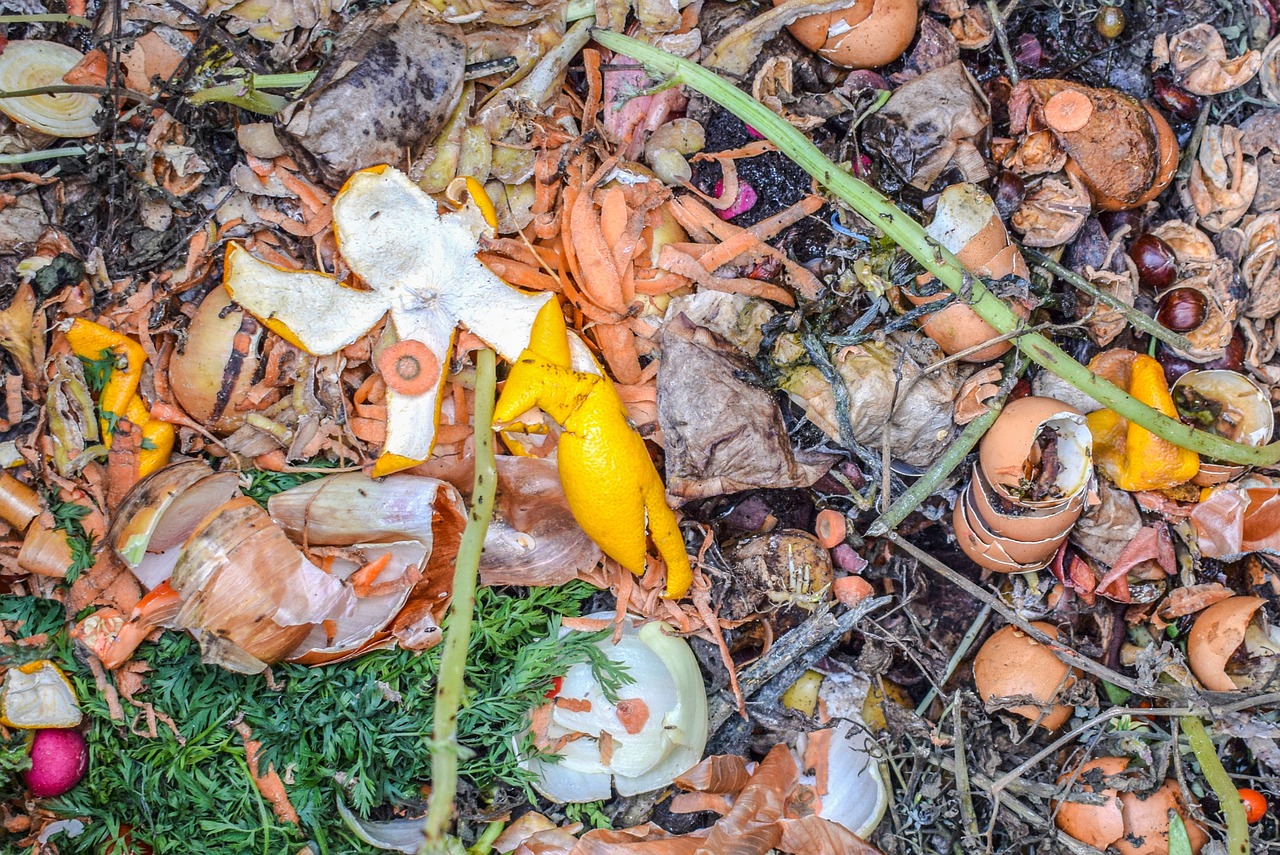
Understanding Composting Basics
Composting is an exciting journey into the world of nature's recycling program. It's the process of transforming organic waste—like your kitchen scraps—into nutrient-rich compost that can rejuvenate your garden. But what exactly does this entail? At its core, composting is a natural decomposition process where microorganisms, like bacteria and fungi, break down organic matter. Think of it as nature's way of taking your kitchen waste and giving it a second life, turning it into something valuable rather than just trash.
To understand composting better, let's break it down into its fundamental principles. When you compost, you create an environment that encourages the growth of these microorganisms. This involves balancing the right mix of green materials (which are high in nitrogen) and brown materials (which are rich in carbon). The microorganisms thrive on this mix, breaking down the organic matter into a dark, crumbly substance known as compost. This process not only enriches the soil but also helps retain moisture and suppress plant diseases.
Now, you might be wondering, "How does this all work?" Well, it begins with the right conditions. Composting requires a combination of moisture, oxygen, and heat. When you pile your kitchen scraps and yard waste together, the microorganisms start to work, generating heat as they break down the materials. This heat is crucial because it speeds up the decomposition process and helps kill off any pathogens or weed seeds that might be present. So, it's like creating a mini-ecosystem right in your backyard!
Here’s a quick overview of the composting process:
- Gathering Materials: Collect your kitchen scraps and yard waste.
- Layering: Alternate between green and brown materials for optimal balance.
- Aeration: Turn your compost regularly to introduce oxygen.
- Moisture Control: Ensure your compost is damp, like a wrung-out sponge.
- Harvesting: After several months, your compost will be ready to use!
In summary, composting is not just a method of waste disposal; it's a sustainable practice that benefits both your garden and the environment. By understanding the basics, you're well on your way to becoming a composting pro!

Benefits of Composting Kitchen Scraps
Composting kitchen scraps isn't just a trendy eco-friendly practice; it’s a powerful way to enhance your garden and contribute to a healthier planet. When you compost, you’re engaging in a natural recycling process that transforms your organic waste into black gold—nutrient-rich compost that your plants will absolutely love. But what exactly are the benefits of composting kitchen scraps? Let’s dive in!
First and foremost, composting significantly reduces waste. Did you know that a large portion of what we throw away is made up of organic materials? By composting, you divert these materials from landfills, which is a win-win situation for both your home and the environment. Each time you toss your vegetable peels or coffee grounds into the compost bin instead of the trash, you are actively participating in waste reduction. Think of it as giving your scraps a second life!
Moreover, composting enhances soil health. The compost you create is teeming with beneficial microorganisms and nutrients that improve soil structure, fertility, and moisture retention. This means your plants will not only grow better but will also be more resilient to pests and diseases. Just like a well-balanced diet is essential for our health, nutrient-rich compost provides the essential elements for thriving plants.
Another significant benefit of composting is its role in promoting environmental sustainability. By keeping organic waste out of landfills, you are also reducing the production of methane, a potent greenhouse gas emitted during the decomposition of organic materials in anaerobic conditions. In fact, landfills are one of the largest sources of methane emissions globally. Therefore, by composting, you are actively contributing to the fight against climate change.
When you compost, you play a crucial role in reducing landfill waste. Every year, millions of tons of organic waste end up in landfills, where they contribute to environmental degradation. By composting kitchen scraps, you can significantly decrease the volume of waste sent to these sites. Imagine if everyone made a small effort to compost; we could drastically reduce the burden on our landfills!
Landfills have a notorious reputation for being harmful to the environment. They not only consume valuable land but also produce harmful gases like methane, which is 25 times more effective at trapping heat in the atmosphere than carbon dioxide over a 100-year period. Composting kitchen scraps helps mitigate these effects by reducing the amount of organic waste that decomposes anaerobically in landfills. By composting, you’re not just helping your garden; you’re also helping the planet!
When comparing composting to traditional waste disposal methods, the benefits of composting become even clearer. Traditional waste disposal often leads to pollution and resource depletion, whereas composting is a sustainable practice that enriches the soil. It’s like choosing to invest in your future rather than spending your money on something that will ultimately harm you. Composting is a simple yet effective way to turn your kitchen scraps into a valuable resource.
In conclusion, composting kitchen scraps offers a multitude of benefits that extend beyond just your garden. From reducing landfill waste and improving soil health to promoting environmental sustainability, composting is a practice that everyone can embrace. So, why not start today? Your garden—and the planet—will thank you!
Q: What kitchen scraps can I compost?
A: You can compost a variety of kitchen scraps, including fruit and vegetable peels, coffee grounds, eggshells, and even paper towels. Just avoid meat, dairy, and oily foods.
Q: How long does it take for compost to break down?
A: The time it takes for compost to break down can vary, but generally, it takes anywhere from a few weeks to several months, depending on the method used and the materials involved.
Q: Do I need to turn my compost?
A: Yes! Turning your compost helps aerate it and speeds up the decomposition process. Aim to turn your compost pile every few weeks.
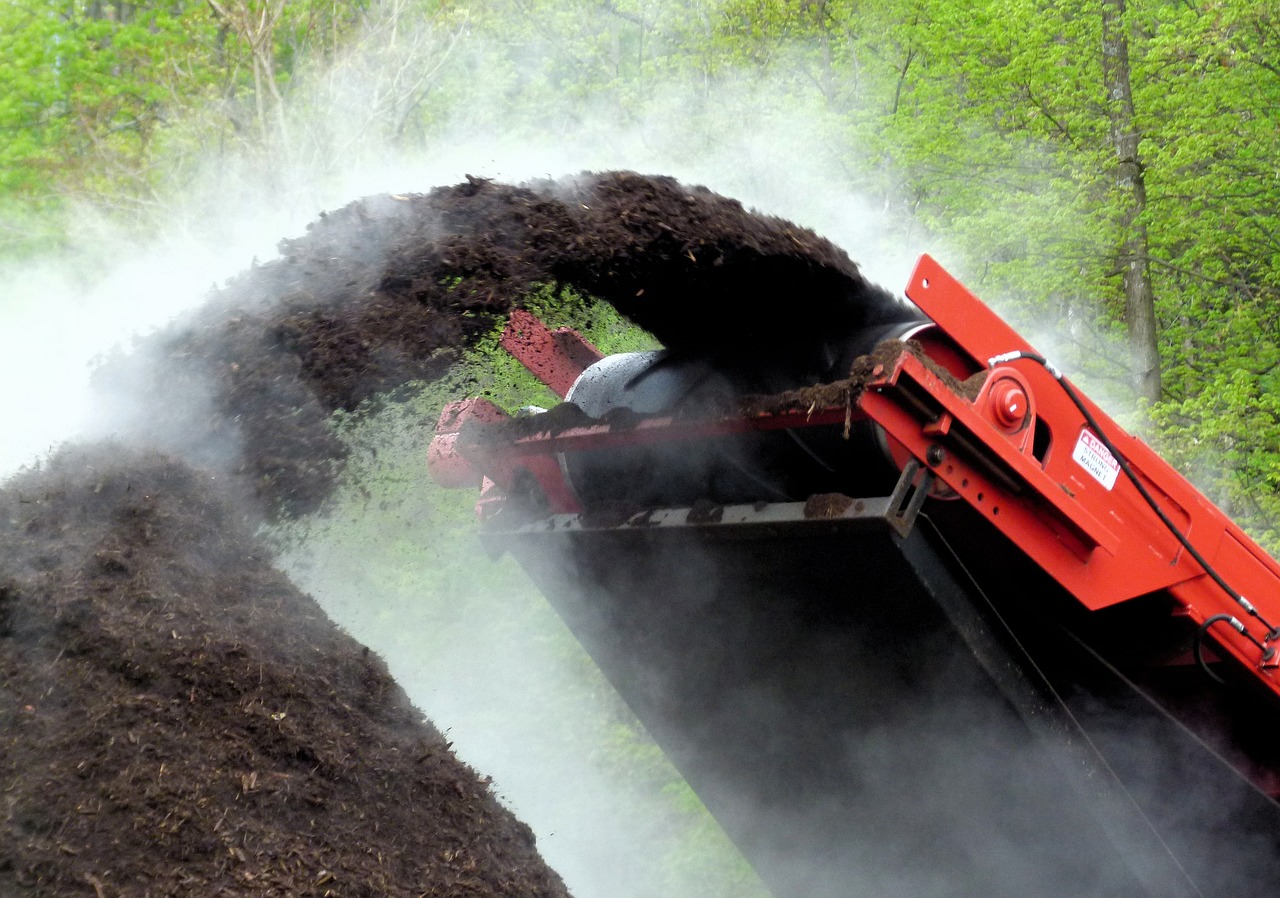
Reducing Landfill Waste
Composting kitchen scraps is more than just a trendy hobby; it’s a powerful way to reduce landfill waste. Did you know that food waste makes up a staggering 30-40% of the total waste in landfills? When you compost, you’re not only cutting down on this waste but also giving a second life to the organic materials that would otherwise contribute to the growing mountains of garbage.
When organic waste, such as fruit peels, vegetable trimmings, and coffee grounds, ends up in landfills, it undergoes anaerobic decomposition. This process produces methane, a greenhouse gas that is 25 times more potent than carbon dioxide over a 100-year period. By composting these materials, you can prevent this harmful gas from being released into the atmosphere. Imagine the impact if every household started composting! The collective effort could lead to a significant reduction in greenhouse gas emissions.
Furthermore, composting not only alleviates the burden on landfills but also encourages a circular economy. Instead of throwing away food scraps, you transform them into nutrient-rich compost that can enrich your garden soil. This practice not only benefits your plants but also promotes a healthier ecosystem by returning essential nutrients to the earth. It's like giving back to Mother Nature!
Here’s a quick look at the impact of composting on landfill waste:
| Impact | Details |
|---|---|
| Reduction in Waste | Composting can reduce the amount of waste sent to landfills by up to 50%. |
| Methane Emissions | Prevents millions of tons of methane from being released into the atmosphere. |
| Soil Enrichment | Transforms waste into valuable compost that enhances soil health. |
In conclusion, composting kitchen scraps is a simple yet impactful way to reduce landfill waste. By making a conscious effort to compost, you’re not only helping the environment but also creating a sustainable cycle that benefits your garden and the planet. So, the next time you’re about to toss those apple cores or vegetable scraps in the trash, think twice! You have the power to make a difference, one compost pile at a time.
- What can I compost? You can compost fruits, vegetables, coffee grounds, eggshells, and yard waste. Avoid meat, dairy, and oily foods as they can attract pests.
- How long does it take to compost? Composting can take anywhere from a few weeks to several months, depending on the method and conditions.
- Can I compost in an apartment? Yes! You can use a compost bin or a vermicomposting system to compost kitchen scraps even in small spaces.
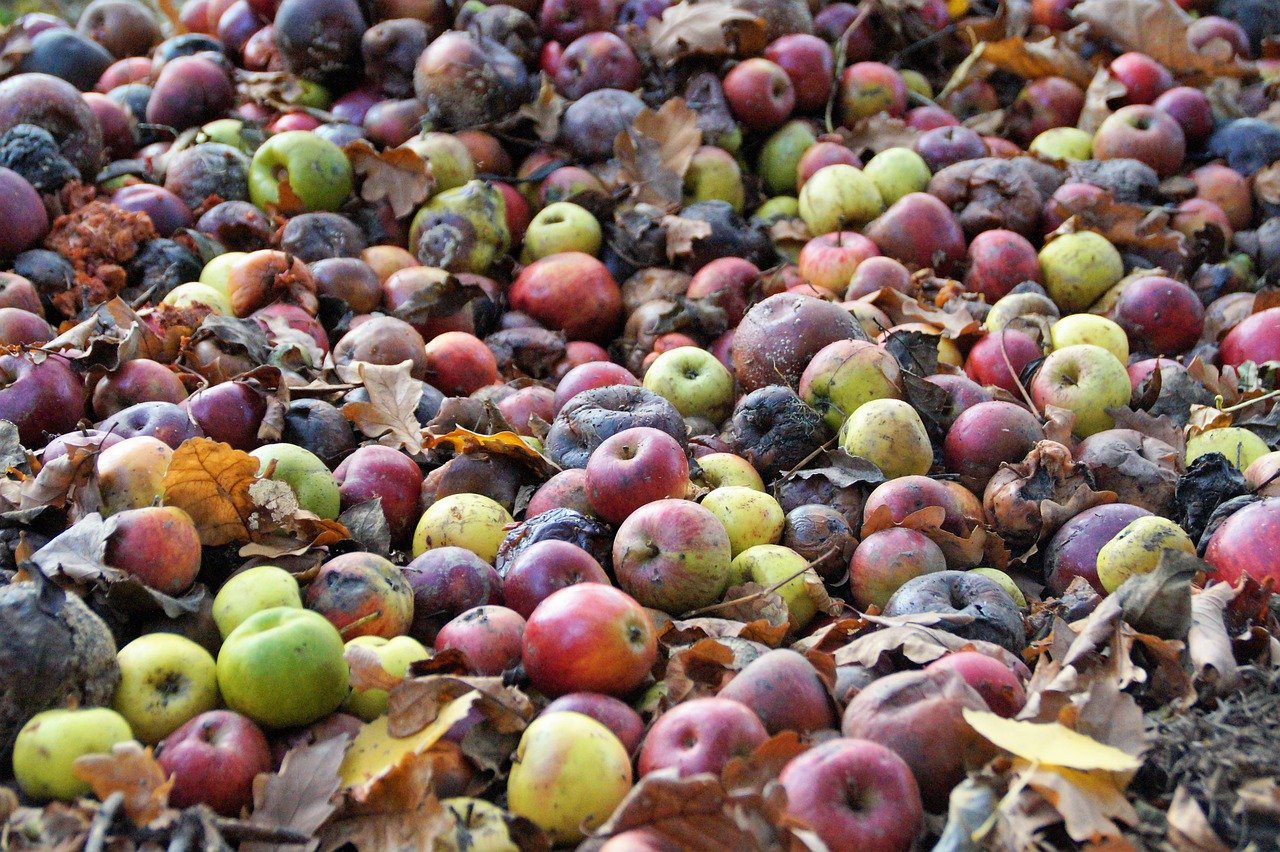
Environmental Impact of Landfills
Landfills are often viewed as a necessary evil in our modern society, a place where we dump our waste and forget about it. However, the reality is much more complex and alarming. When organic materials like food scraps are tossed into landfills, they undergo anaerobic decomposition, a process that occurs without oxygen. This leads to the production of methane, a greenhouse gas that is significantly more potent than carbon dioxide—about 25 times more effective at trapping heat in the atmosphere over a century. In fact, methane emissions from landfills account for approximately 18% of total U.S. methane emissions, making them a major contributor to climate change.
Moreover, landfills pose serious risks to our environment. The leachate, a toxic liquid formed when waste breaks down, can seep into the ground and contaminate local water supplies, harming aquatic ecosystems and potentially affecting human health. The accumulation of waste in landfills also leads to the loss of valuable land, which could have been used for parks, agriculture, or natural habitats. With growing urban populations and limited space, the expansion of landfills is becoming increasingly unsustainable.
To truly grasp the environmental impact of landfills, consider these staggering facts:
- Landfills are the third-largest source of methane emissions in the United States.
- Each year, Americans generate about 292.4 million tons of trash, and a significant portion of that is organic waste that could be composted.
- Over time, landfills can take up to 25 years to decompose organic materials, while composting can break them down in just a few months.
By choosing composting over traditional waste disposal methods, we can drastically reduce the volume of waste sent to landfills. Not only does composting help in managing waste more effectively, but it also enriches the soil, promotes biodiversity, and contributes to a healthier planet. As more individuals and communities embrace composting, the cumulative impact can lead to a significant decrease in landfill reliance, helping to combat climate change and preserve our environment for future generations.
1. What types of kitchen scraps can I compost?
Most kitchen scraps such as fruit and vegetable peels, coffee grounds, eggshells, and even certain paper products can be composted. However, avoid meat, dairy, and oily foods as they can attract pests.
2. How long does it take for compost to be ready?
Typically, compost can take anywhere from a few weeks to several months to decompose, depending on factors like the materials used and how well the pile is maintained.
3. Can I compost in an apartment?
Absolutely! You can use a compost bin or even try vermicomposting with worms to manage kitchen scraps in smaller spaces.
4. What should I do if my compost smells bad?
A bad smell usually indicates that your compost pile is too wet or has too many green materials. Try adding more brown materials like dry leaves or cardboard to balance it out.
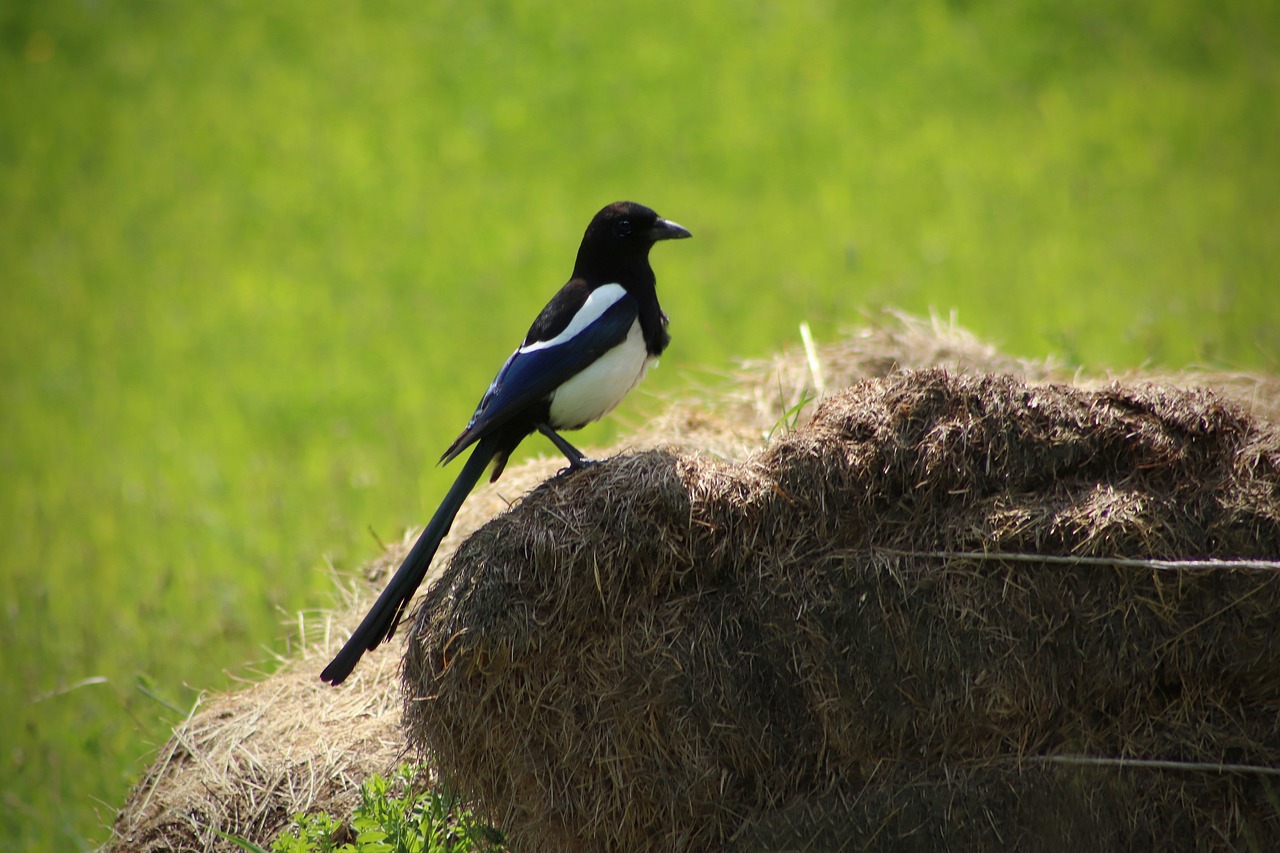
Composting vs. Traditional Waste Disposal
When it comes to managing kitchen scraps, the debate between composting and traditional waste disposal methods is more critical than ever. Imagine tossing your food waste into a landfill, where it will sit for years, contributing to pollution and greenhouse gas emissions. Now, picture that same waste being transformed into rich, fertile compost that can nourish your garden. The difference is not just in the process, but in the impact on our planet.
Traditional waste disposal often involves sending organic materials to landfills, where they decompose anaerobically, meaning without oxygen. This process produces methane, a greenhouse gas that is significantly more potent than carbon dioxide. In fact, methane is estimated to be over 25 times more effective at trapping heat in the atmosphere over a 100-year period. By contrast, composting allows organic matter to decompose in the presence of oxygen, resulting in a much lower environmental impact.
Let's break down the key differences between composting and traditional waste disposal:
| Aspect | Composting | Traditional Waste Disposal |
|---|---|---|
| Environmental Impact | Reduces methane emissions, enriches soil | Contributes to methane production, pollution |
| Soil Health | Improves soil structure and fertility | Does not enhance soil quality |
| Waste Reduction | Reduces landfill waste significantly | Increases landfill volume |
| Cost | Low-cost or free, depending on methods | Can incur disposal fees |
As you can see, composting not only benefits the environment but also contributes to healthier soil, which is essential for plant growth. Additionally, composting can save money, as many municipalities charge fees for waste disposal. By composting at home, you can turn your kitchen scraps into a valuable resource rather than a costly burden.
Moreover, composting promotes a sustainable lifestyle. It encourages individuals and communities to think critically about their waste and consider how they can reduce their carbon footprint. It's a small change that can lead to significant impacts, creating a ripple effect that can inspire others to follow suit.
In conclusion, while traditional waste disposal may seem convenient, it comes with a hefty environmental price tag. Composting is a proactive approach that not only helps manage waste but also enriches the earth. So, why not make the switch? Your garden—and the planet—will thank you!
- What can I compost? You can compost fruits, vegetables, coffee grounds, eggshells, and yard waste.
- What should I avoid composting? Avoid meat, dairy, oily foods, and any materials treated with chemicals.
- How long does it take to make compost? Composting can take anywhere from a few weeks to several months, depending on conditions.
- Can I compost in an apartment? Yes! You can use a compost bin or start a vermicomposting system.
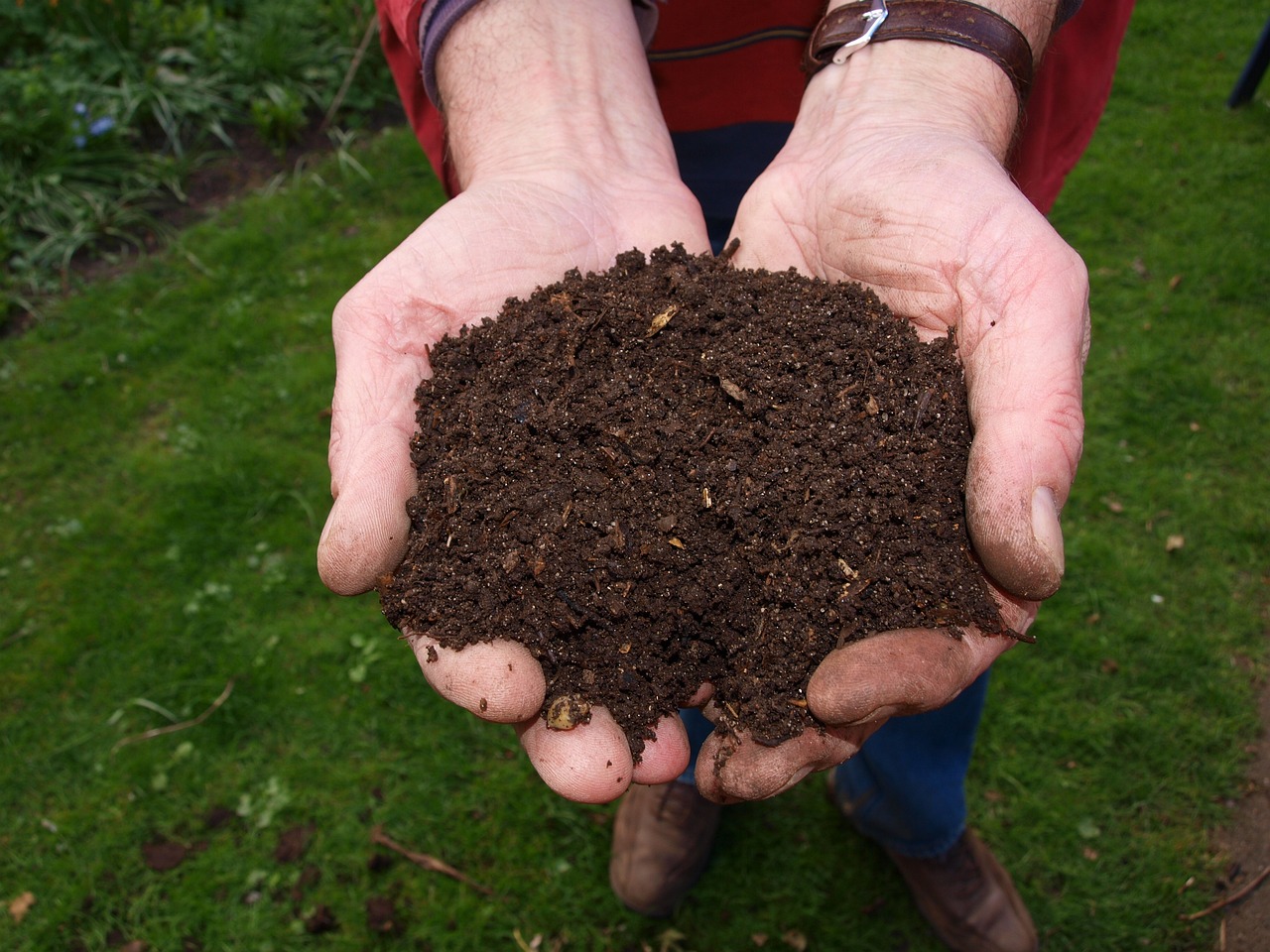
Enhancing Soil Health
When it comes to gardening, the health of your soil is paramount. Think of soil as the foundation of your garden; just like a house needs a strong base, your plants require nutrient-rich soil to thrive. Composting kitchen scraps plays a crucial role in enhancing soil health by adding essential nutrients, improving soil structure, and fostering a vibrant ecosystem of beneficial organisms.
Compost acts like a natural fertilizer, enriching the soil with vital nutrients such as nitrogen, phosphorus, and potassium. These nutrients are not just essential for plant growth; they also help in the development of roots, leaves, and flowers. When you incorporate compost into your garden, you’re essentially feeding your plants a balanced diet, which results in healthier and more robust growth.
Moreover, compost improves the soil structure. It helps to create a crumbly texture that allows for better aeration and drainage. This is particularly important because compacted soil can hinder root growth and water absorption. Imagine trying to breathe through a straw; that’s how your plants feel in compacted soil! By adding compost, you’re opening up the soil, allowing roots to spread out and absorb water and nutrients more efficiently.
Another significant benefit of compost is its ability to retain moisture. Healthy soil enriched with compost can hold water more effectively, which means you won’t have to water your garden as frequently. This not only saves you time but also conserves water, making your gardening practice more sustainable. In regions where water scarcity is a concern, this aspect of composting can be a game-changer.
In addition to these benefits, compost also promotes a thriving ecosystem within the soil. It attracts earthworms and other beneficial microorganisms that play a vital role in breaking down organic matter and enhancing nutrient availability. These organisms are like tiny workers in your garden, tirelessly improving soil health and fertility. The more diverse the life in your soil, the healthier your plants will be.
To summarize, here are the key ways compost enhances soil health:
- Nutrient Enrichment: Provides essential nutrients for plant growth.
- Improved Soil Structure: Enhances aeration and drainage.
- Moisture Retention: Helps retain water, reducing the need for frequent watering.
- Soil Ecosystem Boost: Attracts beneficial organisms that improve soil fertility.
Incorporating compost into your gardening routine is not just a practice; it's a commitment to nurturing the soil and, in turn, your plants. By composting kitchen scraps, you’re not only reducing waste but also creating a thriving environment for your garden to flourish. So, go ahead and start composting; your plants will thank you!
Q: What kitchen scraps can I compost?
A: You can compost a variety of kitchen scraps, including fruit and vegetable peels, coffee grounds, eggshells, and even small amounts of paper products like napkins and cardboard. However, avoid meat, dairy, and oily foods as they can attract pests.
Q: How long does it take for compost to be ready?
A: The time it takes for compost to mature can vary, but generally, it takes between 3 to 6 months. Factors such as temperature, moisture, and the materials used can affect the speed of decomposition.
Q: Can I compost in the winter?
A: Yes, you can compost in the winter! While the decomposition process slows down in colder temperatures, it doesn’t stop entirely. You can continue to add kitchen scraps to your compost pile, and once spring arrives, the process will pick up again.
Q: How do I know when my compost is ready to use?
A: Finished compost should be dark, crumbly, and have an earthy smell. If you can no longer recognize the original materials, it’s a good sign that your compost is ready to enrich your garden.

Choosing the Right Materials
When it comes to composting, not all kitchen scraps are created equal. Choosing the right materials is essential to ensure that your compost pile thrives and produces nutrient-rich compost that will benefit your garden. You want to strike a perfect balance between what you add, ensuring that you include a variety of organic materials while avoiding those that could hinder the composting process.
First and foremost, it’s crucial to understand the two main categories of compost materials: green materials and brown materials. Green materials are typically rich in nitrogen, while brown materials are high in carbon. This balance is vital for the microbial activity that drives the composting process. Think of it like a recipe; too much of one ingredient can spoil the dish. For optimal results, aim for a ratio of about one part green to three parts brown.
So, what exactly can you compost? Here are some common kitchen scraps that make excellent additions to your compost pile:
- Fruit and vegetable scraps: These are the stars of your compost pile. Peels, cores, and leftover bits from your meals can all break down beautifully.
- Coffee grounds: Not only do they add nitrogen, but they also help improve the texture of your compost.
- Eggshells: Crushed eggshells provide calcium, which is essential for plant growth.
- Grass clippings: If you have a lawn, these can be a great source of nitrogen.
On the flip side, there are materials you should avoid at all costs. Some kitchen scraps can attract pests, create unpleasant odors, or simply take too long to break down. Here are a few items to steer clear of:
- Meat and dairy products: These can attract unwanted pests and create foul smells.
- Oils and fats: Similar to meat, these can lead to odor issues and pest problems.
- Cooked foods: While it may seem convenient, cooked foods can disrupt the balance of your compost pile.
In summary, choosing the right materials for your compost pile is all about balance and selection. By incorporating a variety of green and brown materials while avoiding problematic scraps, you'll create an environment where beneficial microbes can thrive. This not only speeds up the decomposition process but also results in rich, dark compost that can transform your garden into a flourishing oasis.
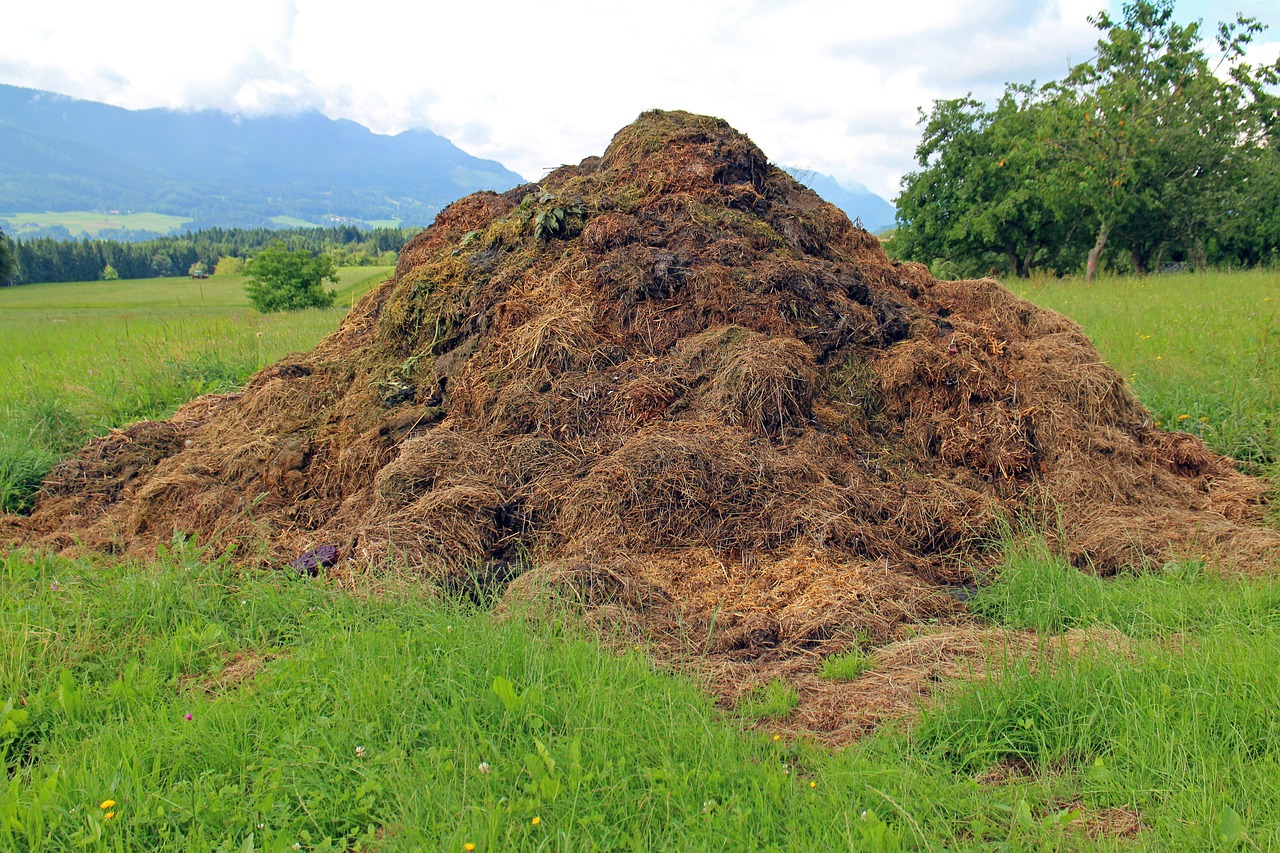
Green vs. Brown Materials
When it comes to composting, understanding the difference between green and brown materials is crucial for achieving that perfect balance that leads to rich, fertile compost. Think of green materials as the energizers of your compost pile. They are typically high in nitrogen, which is essential for the growth of microorganisms that break down organic matter. Examples of green materials include kitchen scraps like fruit and vegetable peels, coffee grounds, and grass clippings.
On the flip side, we have brown materials, which are the foundation of your compost. These are carbon-rich materials that provide structure and aeration, allowing air to circulate through the pile. Common brown materials include dry leaves, straw, and cardboard. Without a good amount of brown materials, your compost can become too wet and compact, leading to unpleasant odors and a slower decomposition process.
To create an effective compost pile, you should aim for a ratio of about 3 parts brown materials to 1 part green materials. This ratio ensures that there is enough nitrogen to fuel the decomposition while also providing the necessary carbon to maintain aeration. If you find that your compost is too soggy, consider adding more brown materials to balance it out. Conversely, if it’s too dry and not breaking down, you might need to add more green materials.
Here's a quick summary of the characteristics of each type:
| Material Type | Examples | Function |
|---|---|---|
| Green Materials | Fruit and vegetable scraps, coffee grounds, grass clippings | High in nitrogen, promotes microbial activity |
| Brown Materials | Dry leaves, straw, cardboard | High in carbon, provides structure and aeration |
In summary, achieving the right balance of green and brown materials is essential for effective composting. By mixing these components wisely, you’ll be on your way to creating nutrient-rich compost that will not only enhance your garden’s soil but also contribute to a more sustainable environment.

Common Kitchen Scraps to Compost
When it comes to composting, not all kitchen scraps are created equal. Understanding which scraps are beneficial for your compost pile can significantly enhance the quality of your final product. Imagine your compost as a delicious stew; the right ingredients make all the difference! Here are some common kitchen scraps you can toss into your compost bin:
First up, we have fruits and vegetables. These are the stars of any compost pile! Leftover peels, cores, and even the bits you didn’t eat can add valuable nutrients. For instance, banana peels are rich in potassium, which is essential for plant health. Similarly, apple cores can decompose into a nutrient-rich addition that your garden will love.
Next, let’s talk about coffee grounds. If you’re a coffee lover, rejoice! Not only do these grounds provide a nitrogen boost, but they also attract earthworms, which are fantastic for aerating your compost. Just remember to mix them well with other materials to maintain balance.
Another great addition is eggshells. While they might seem insignificant, crushed eggshells are packed with calcium, which is vital for strong plant growth. Plus, they break down easily, making them a perfect candidate for composting.
However, it’s essential to avoid certain items that could harm your compost. For instance, meat and dairy products can attract pests and create odors that are less than pleasant. Similarly, oils and greasy foods should be left out of the compost bin, as they can slow down the decomposition process.
To sum it up, here’s a quick rundown of common kitchen scraps that are excellent for composting:
- Fruits and vegetables (peels, cores, and scraps)
- Coffee grounds
- Eggshells
By incorporating these kitchen scraps into your compost, you’re not just reducing waste; you’re creating a nutrient-rich amendment that will help your garden thrive. Remember, the key to successful composting is variety and balance. So, the next time you’re preparing a meal, think about how you can turn those scraps into something valuable for your garden!
Q: Can I compost citrus peels?
A: Yes, you can compost citrus peels, but in moderation. They can help add acidity to your compost, but too many can slow down the decomposition process due to their high oil content.
Q: What should I do if my compost smells bad?
A: A smelly compost pile usually indicates an imbalance of materials. Ensure you have enough brown materials (like dried leaves or cardboard) to balance out the green materials (like food scraps). Turning the pile can also help aerate it and reduce odors.
Q: How long does it take for kitchen scraps to break down in compost?
A: The time it takes for kitchen scraps to decompose can vary, but generally, it can take anywhere from a few weeks to several months, depending on factors like temperature, moisture, and the materials used.
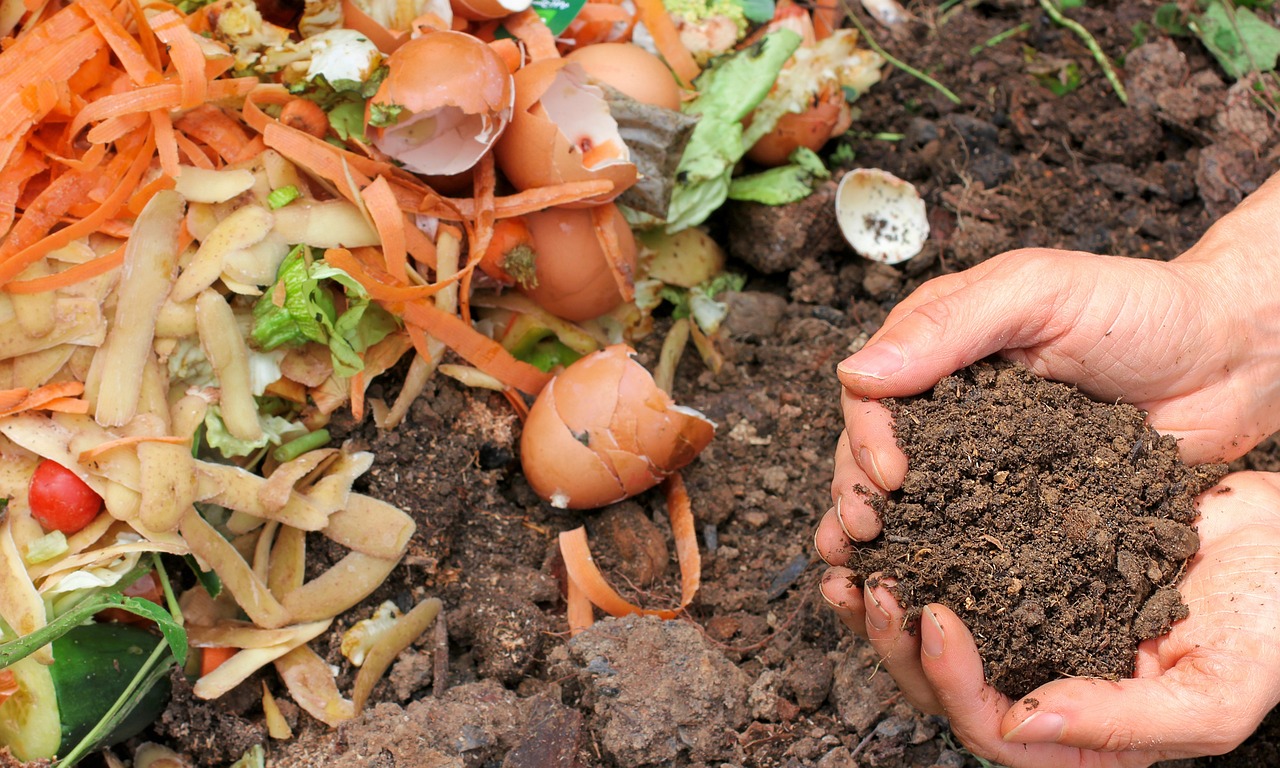
Composting Methods for Beginners
Composting can seem daunting at first, but fear not! There are several beginner-friendly methods that can turn your kitchen scraps into nutrient-rich compost without requiring a PhD in horticulture. Let’s dive into some of the most accessible methods you can start with, ensuring your composting journey is both easy and effective.
One of the most popular methods is bin composting. This method involves using a compost bin, which can be a simple homemade structure or a store-bought one. The beauty of bin composting lies in its convenience—it keeps your compost contained and can be placed in your backyard or even on a balcony. To set up a compost bin, choose a location that gets a mix of sun and shade. This allows the compost to heat up while also preventing it from drying out too quickly. Fill your bin with a balanced mix of green and brown materials, turning it occasionally to aerate the pile. A well-maintained bin can produce compost in as little as a few months!
Another fantastic method for beginners is vermicomposting, which uses worms to break down organic matter. This method is not only efficient but also fun! You can start a vermicomposting system in a small bin or even a worm tower. Red wigglers are the star players here, munching on your kitchen scraps and turning them into rich worm castings. To set up your vermicomposting system, you’ll need a bin with drainage holes, some bedding material like shredded newspaper or cardboard, and of course, your worms. Keep the bin in a cool, dark place and feed your worms regularly, avoiding citrus and onion scraps. In no time, you’ll have a potent fertilizer that your plants will love!
Now, whether you choose bin composting or vermicomposting, there are some essential tips to keep in mind. First, always aim for a balanced mix of materials. A good rule of thumb is to use a ratio of about 3 parts brown materials (like dry leaves, cardboard, or straw) to 1 part green materials (such as vegetable scraps, coffee grounds, and grass clippings). This balance is crucial for effective decomposition, ensuring that your compost pile doesn’t become too wet or smelly.
Additionally, regular maintenance is key to successful composting. If you’re using a compost bin, make sure to turn your pile every few weeks. This aeration helps speed up the decomposition process and prevents the pile from becoming compacted. If you notice that your compost is too dry, simply add some water or more green materials. Conversely, if it’s too wet and smelly, add more brown materials and turn it more frequently.
In summary, composting doesn’t have to be complicated. With methods like bin composting and vermicomposting, you can easily turn your kitchen scraps into a valuable resource for your garden. So, roll up your sleeves, get your hands dirty, and start composting today! Your plants (and the planet) will thank you.
- What can I compost? You can compost fruit and vegetable scraps, coffee grounds, eggshells, grass clippings, and dried leaves. Avoid meat, dairy, and oily foods.
- How long does it take to make compost? Depending on the method and materials used, compost can take anywhere from a few weeks to several months to mature.
- Can I compost in an apartment? Absolutely! Vermicomposting is a great option for apartments, as it requires very little space.
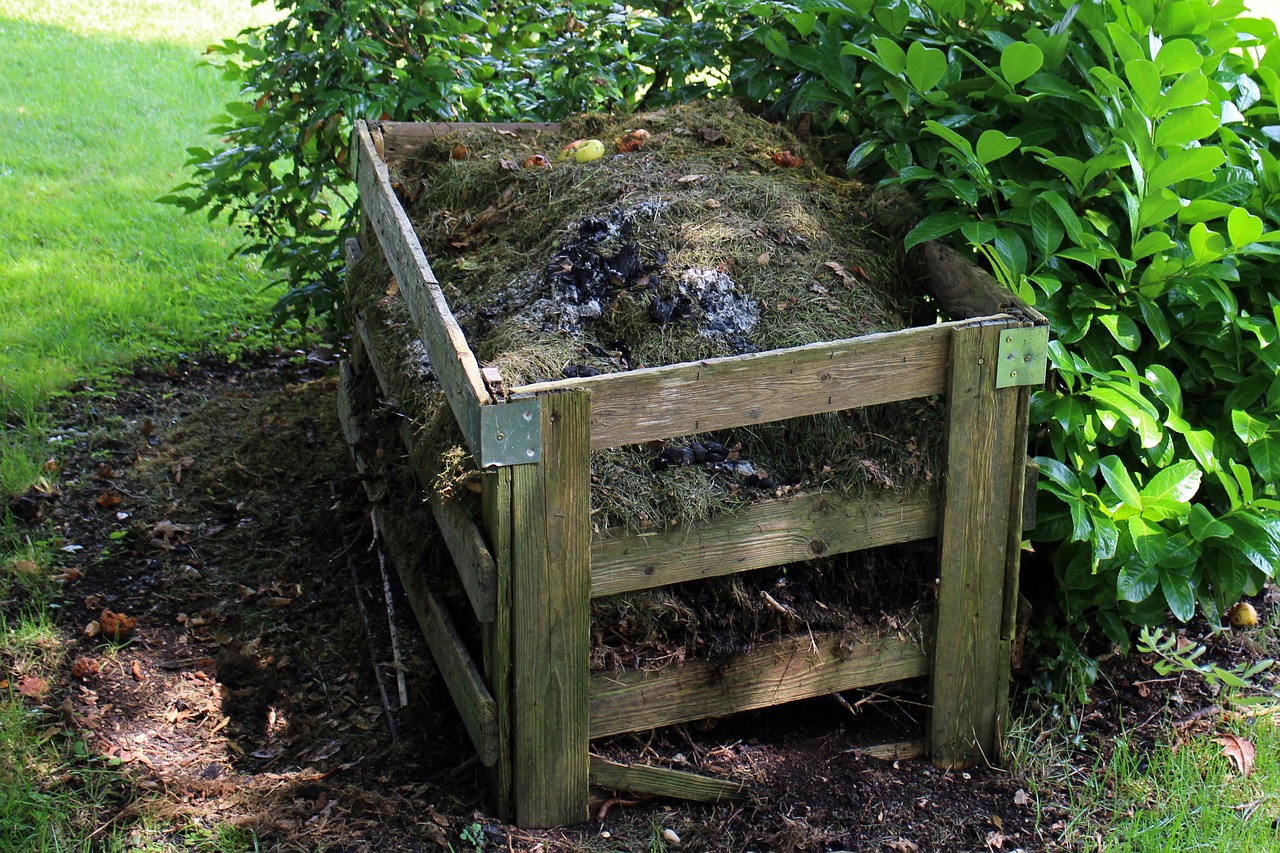
Bin Composting
When it comes to composting your kitchen scraps, is one of the most popular and effective methods. This technique is not only user-friendly but also allows you to manage your organic waste in a neat and organized way. Imagine having a dedicated space in your backyard where you can transform your vegetable peels, fruit scraps, and coffee grounds into black gold for your garden. Sounds appealing, right? Let’s dive into how to set up and maintain a compost bin!
First off, choosing the right compost bin is crucial. You can opt for a store-bought compost bin, which often comes with features like aeration holes and a lid to keep pests away, or you can create your own DIY bin using materials like wooden pallets or a simple plastic container. The size of your bin will depend on the amount of kitchen scraps you generate, but generally, a bin that holds at least 3 cubic feet is ideal for effective composting.
Once you have your bin ready, it’s time to start adding your kitchen scraps. It’s essential to maintain a balance between green materials (like fruit and vegetable scraps, coffee grounds, and grass clippings) and brown materials (such as dried leaves, cardboard, and paper). A good rule of thumb is to aim for a ratio of about 2:1 of brown to green materials. This balance is vital because it helps create the right conditions for microorganisms to thrive and decompose your scraps efficiently.
As you add materials to your bin, make sure to chop or shred larger items to speed up the decomposition process. Aeration is another critical factor in bin composting. Regularly turning your compost helps introduce oxygen, which is necessary for the microbes that break down the organic matter. You can use a pitchfork or a compost aerator to mix the contents every few weeks. This not only helps with decomposition but also prevents any unpleasant odors that might arise from anaerobic conditions.
Moisture control is equally important. Your compost should be as moist as a wrung-out sponge—not too dry and not too wet. If you find it’s too dry, simply add some water or more green materials; if it’s too wet, incorporate additional brown materials to soak up the excess moisture. Keeping an eye on the temperature of your compost can also give you clues about its health—ideally, it should reach temperatures between 130°F and 160°F, which indicates that the microbes are hard at work.
Lastly, patience is key! Depending on the materials you’ve added and how well you maintain your bin, it can take anywhere from a few weeks to several months for your compost to be ready. When it’s dark, crumbly, and has an earthy smell, you’ll know it’s time to use your homemade compost in your garden. Not only will you reduce waste, but you’ll also be enriching your soil, promoting healthy plant growth, and contributing to a more sustainable environment.
Q: How often should I turn my compost bin?
A: It’s best to turn your compost bin every 2-4 weeks to ensure proper aeration and decomposition.
Q: Can I compost meat or dairy products?
A: It's generally not recommended to compost meat or dairy as they can attract pests and create odors. Stick to plant-based scraps for best results.
Q: What should I do if my compost smells?
A: A smelly compost pile usually indicates that it’s too wet or lacking in oxygen. Try turning the pile and adding more brown materials to balance it out.
Q: How do I know when my compost is ready?
A: Finished compost will be dark, crumbly, and have a pleasant, earthy smell. It should look like rich soil and be free of recognizable food scraps.
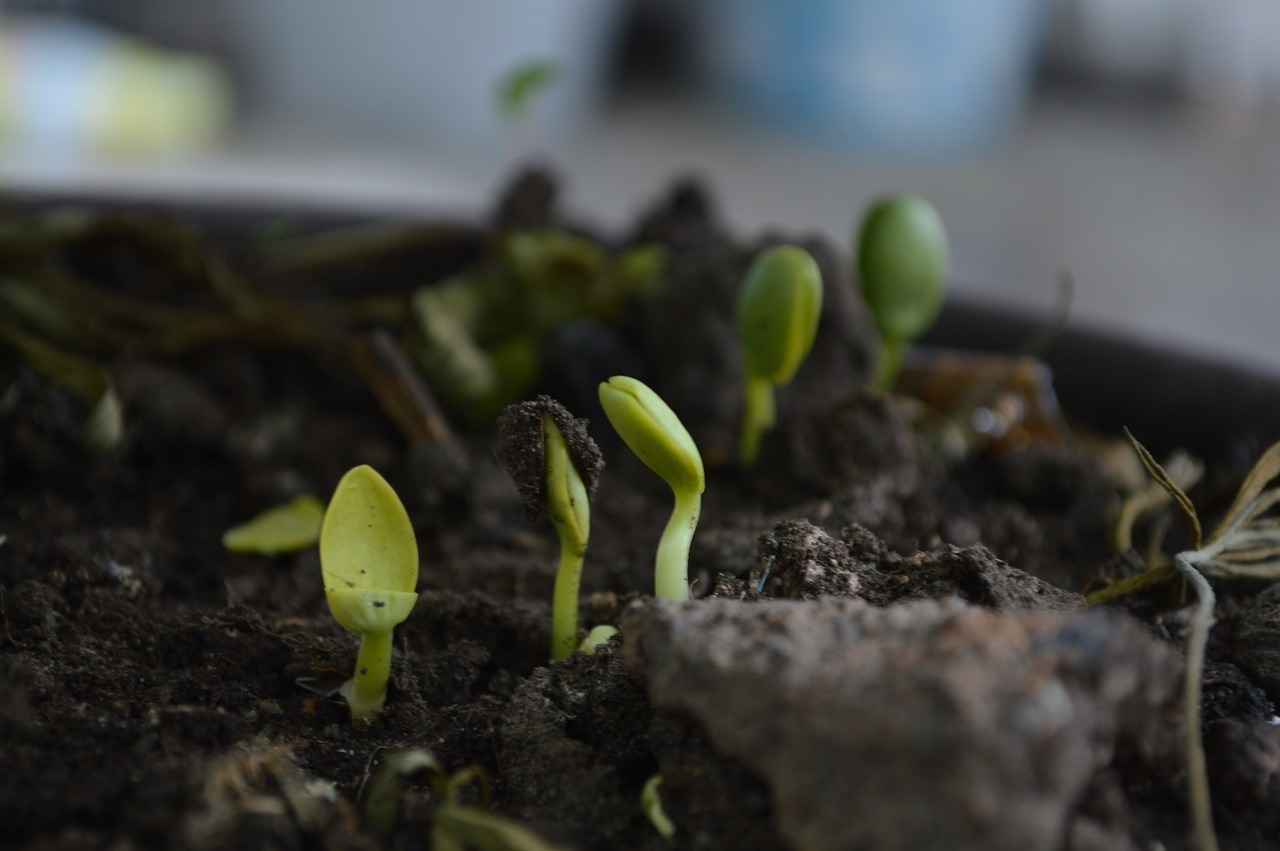
Vermicomposting
Vermicomposting is an innovative and highly effective way to recycle your kitchen scraps using the natural processes of worms. Imagine having a mini ecosystem right in your kitchen or backyard, where these little wrigglers turn your food waste into nutrient-rich compost! It’s not just a fun project; it’s a fantastic way to contribute to a healthier planet. So, how do you get started with vermicomposting, and what makes it so special?
First off, the key players in this process are red wigglers, the superhero worms of composting. They thrive on organic matter and can consume their weight in food scraps daily. Setting up a vermicomposting system is relatively simple. You’ll need a worm bin, which can be as basic as a plastic container with air holes or a specially designed worm composting bin. Fill it with bedding material like shredded newspaper, cardboard, or coconut coir to create a comfortable environment for your worms.
Once your bin is ready, it’s time to introduce the worms. A good rule of thumb is to start with about a pound of worms for every pound of kitchen scraps you produce weekly. These worms will get to work, munching on your fruit and vegetable peels, coffee grounds, and even crushed eggshells, breaking them down into a rich, dark compost known as worm castings. This compost is not just any compost; it’s packed with nutrients that your plants will absolutely love!
Maintaining your vermicomposting bin is crucial. You'll want to keep it moist but not soggy, as worms breathe through their skin and need a humid environment to thrive. A good way to check moisture is to grab a handful of the bedding; it should feel like a damp sponge. If it’s too dry, add a little water; if it’s too wet, add more dry bedding to absorb the excess moisture.
One of the best parts about vermicomposting is that it doesn’t take up much space, making it perfect for urban gardeners or anyone with limited outdoor area. You can keep your worm bin indoors, under the sink, or on a balcony. Plus, there’s minimal odor if you manage it properly, so it won’t be a nuisance in your home.
In summary, vermicomposting is an eco-friendly and efficient way to transform your kitchen scraps into valuable compost. Not only does it reduce waste, but it also enriches your garden soil, promoting healthier plant growth. So, why not give it a try? Your plants—and the planet—will thank you!
Q: What materials can I compost with worms?
A: You can compost vegetable scraps, fruit peels, coffee grounds, crushed eggshells, and even some paper products. Avoid meat, dairy, and oily foods, as they can attract pests.
Q: How often should I feed my worms?
A: It’s best to feed your worms once a week. Just remember to add food gradually and monitor how quickly they consume it to avoid overfeeding.
Q: Can I keep my worm bin indoors?
A: Absolutely! Worm bins can be kept indoors, making them a perfect option for those with limited outdoor space.
Q: What do I do if my worm bin smells?
A: A smelly worm bin usually indicates overfeeding or too much moisture. Check the moisture level and reduce the amount of food you’re adding until the smell subsides.
Q: How long does it take for worms to produce compost?
A: Typically, it takes about 2 to 3 months for worms to process food scraps into compost, depending on the conditions and the amount of food provided.
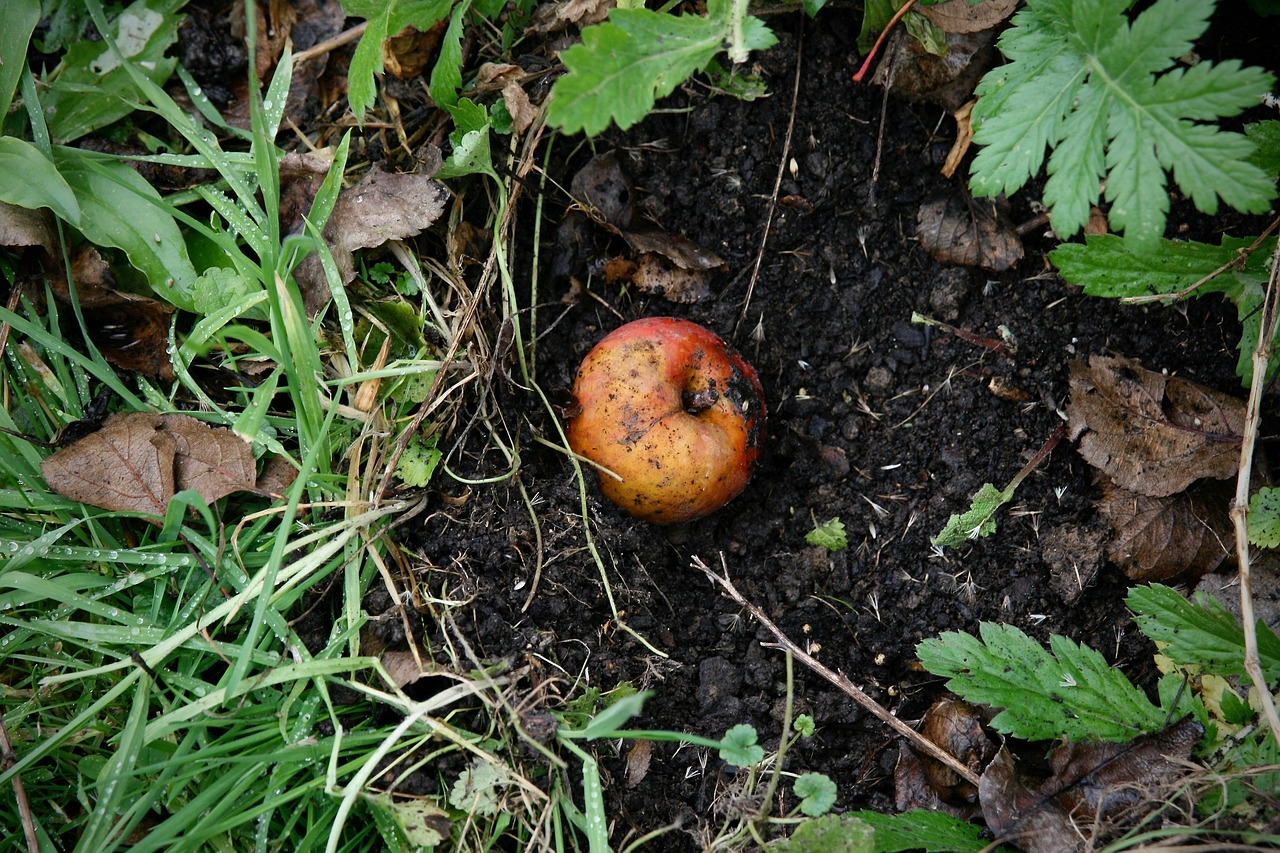
Maintaining Your Compost Pile
Maintaining your compost pile is an essential part of the composting process that ensures you get the best results from your kitchen scraps. Think of your compost pile as a living organism; it needs the right care and attention to thrive. Regular monitoring and maintenance can significantly enhance the decomposition process, resulting in rich, nutrient-dense compost that your garden will love. So, how do you keep your compost pile in tip-top shape?
First and foremost, turning the compost is crucial. This process involves aerating the pile, which speeds up decomposition by introducing oxygen into the mix. Just like a good workout gets your blood pumping, turning your compost gets the microbes working efficiently. Ideally, you should turn your compost every few weeks, or whenever you notice that it’s starting to smell or looks too compacted. Use a pitchfork or shovel to mix the materials thoroughly, ensuring that the older, decomposed matter is moved to the center while the fresher scraps are spread out.
Next up is moisture control. Maintaining the right moisture level in your compost pile is like keeping the perfect balance in a relationship; too much or too little can lead to problems. A compost pile should feel like a damp sponge—moist but not dripping wet. If your compost is too dry, it can slow down the decomposition process, while excess moisture can lead to foul odors and anaerobic conditions. To manage moisture, you can sprinkle water on dry days or add dry materials like shredded newspaper or cardboard if it’s too wet. It’s all about finding that sweet spot!
Additionally, be mindful of the temperature of your compost pile. A well-maintained compost pile should heat up to around 130°F to 160°F (54°C to 71°C) during the decomposition process. This heat is generated by the microbial activity breaking down the organic matter. If your pile isn’t heating up, it might need more nitrogen-rich materials, or it could be too compacted. You can use a compost thermometer to check the temperature, which is a handy tool for any compost enthusiast.
Lastly, remember that patience is key. Composting is not an overnight process; it takes time for the materials to break down completely. Depending on the conditions, you can expect compost to be ready in a few months to a year. Regularly monitoring and maintaining your compost pile will not only speed up this timeline but also result in a higher quality end product. So, roll up your sleeves, get your hands dirty, and enjoy the rewarding experience of creating your own compost!
Q: How often should I turn my compost pile?
A: You should turn your compost pile every few weeks to aerate it and speed up the decomposition process.
Q: What should I do if my compost pile smells bad?
A: If your compost smells bad, it may be too wet or compacted. Try turning it and adding dry materials like shredded paper or cardboard to improve aeration.
Q: Can I compost meat and dairy products?
A: It's generally not recommended to compost meat and dairy products as they can attract pests and create odors. Stick to fruits, vegetables, and other plant-based scraps for best results.
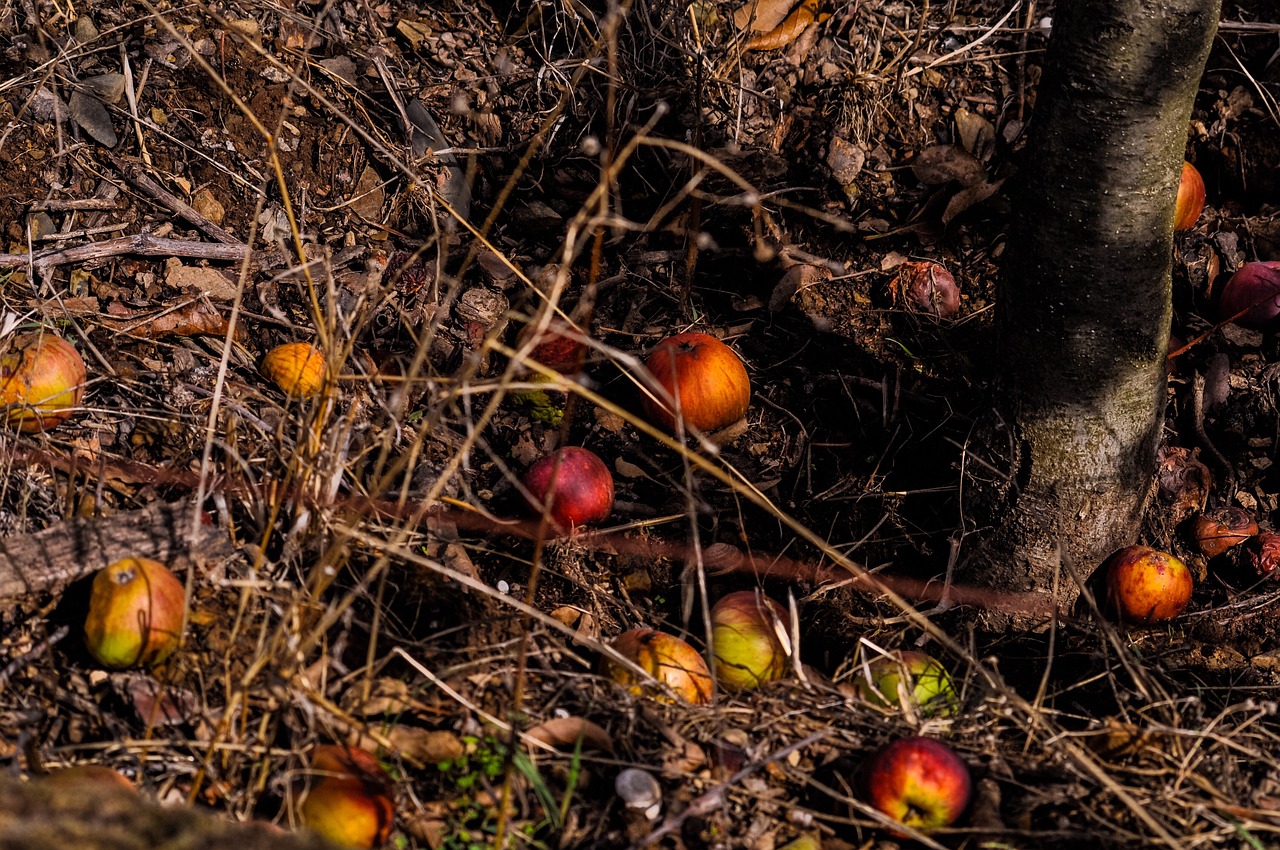
Turning the Compost
Turning your compost is one of the most crucial steps in the composting process. Think of it as giving your compost a good mix, much like stirring a pot of soup to ensure all the flavors blend together. When you turn your compost, you’re aerating it, providing the necessary oxygen that helps the microorganisms thrive and break down the organic matter more efficiently. It’s like giving your compost a breath of fresh air!
So, when should you turn your compost? A good rule of thumb is to turn it every two to three weeks, but this can vary depending on several factors, including the size of your compost pile and the materials you’re using. If you notice that your compost is not heating up, or if it smells unpleasant, it’s a sign that it needs a good turn. Not only does this help with decomposition, but it also prevents the compost from becoming too compacted, which can hinder airflow and slow down the process.
To turn your compost pile, you can use a pitchfork, shovel, or a compost aerator. Start from the outside and work your way in, mixing the materials thoroughly. If your compost pile is large, it might be helpful to divide it into sections and turn each one individually. This method ensures that all materials are evenly aerated and promotes uniform decomposition.
Here’s a simple table to help you understand the benefits of turning your compost:
| Benefit | Description |
|---|---|
| Aeration | Provides oxygen to microorganisms, enhancing decomposition. |
| Even Breakdown | Ensures all materials decompose at a similar rate. |
| Odor Control | Prevents unpleasant smells by promoting aerobic conditions. |
| Temperature Regulation | Helps maintain optimal temperatures for microbial activity. |
In conclusion, turning your compost is not just a chore; it’s a vital practice that contributes to the health of your compost pile. By regularly turning it, you’re ensuring that your kitchen scraps and yard waste break down into nutrient-rich compost that your garden will love. So grab your pitchfork and get mixing; your plants will thank you for it!
- How often should I turn my compost? Aim to turn your compost every two to three weeks for optimal results.
- What tools do I need to turn my compost? A pitchfork, shovel, or compost aerator works best for turning compost.
- What if my compost smells bad? This could indicate a lack of oxygen; turning the pile can help alleviate this issue.
- Can I turn my compost too much? While regular turning is beneficial, overdoing it can disrupt the microbial process. Aim for a balance!
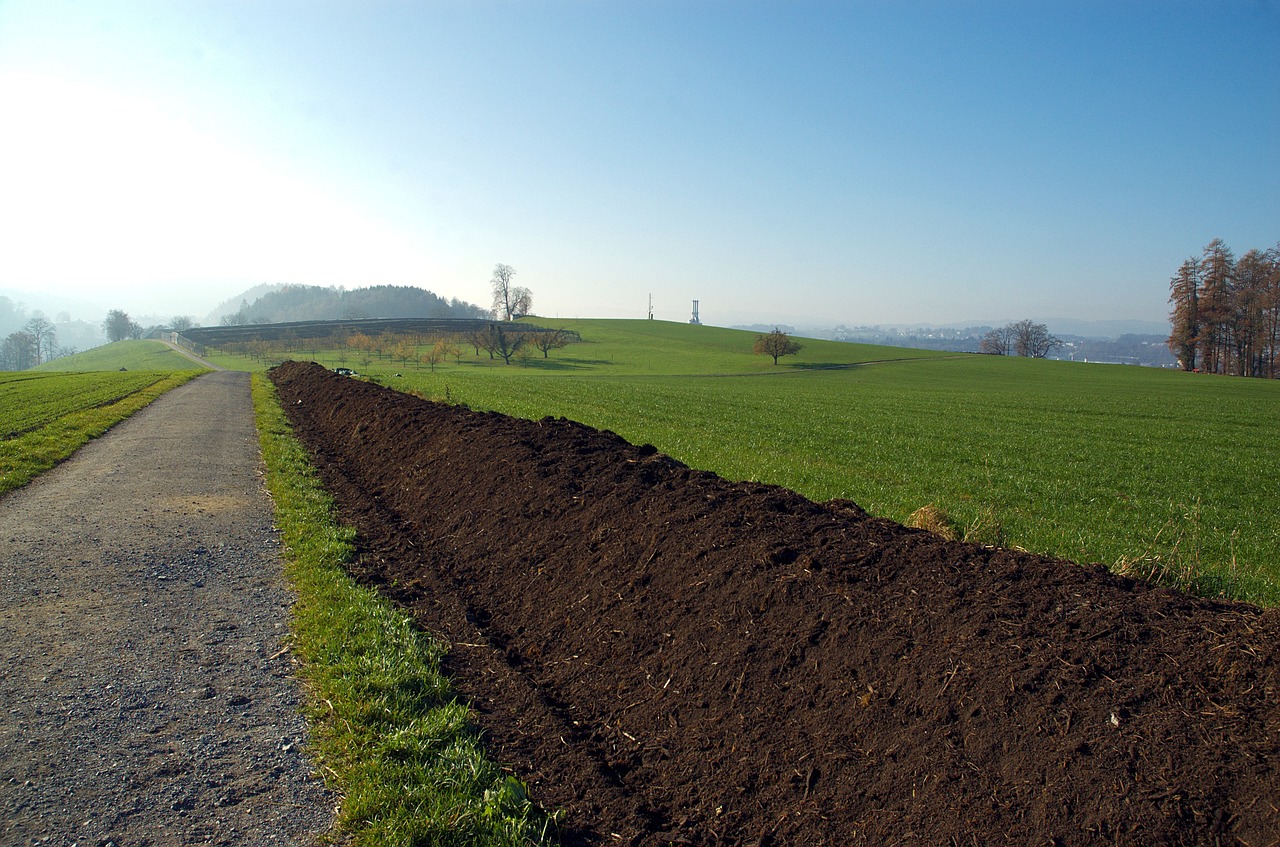
Moisture Control
Moisture control is a critical factor in successful composting. Just like a well-balanced recipe, achieving the right moisture level in your compost pile can make all the difference between a thriving compost system and a smelly, stagnant mess. The ideal moisture content for compost is often compared to that of a wrung-out sponge—damp but not dripping. If your compost is too dry, the decomposition process will slow down significantly, as microorganisms need moisture to thrive. Conversely, if it’s too wet, you risk creating an anaerobic environment, leading to unpleasant odors and a sluggish breakdown of materials.
To maintain optimal moisture levels, you should regularly check your compost pile. A simple way to test is to grab a handful of compost and squeeze it. If a few drops of water come out, you’re in good shape. If it crumbles in your hand, it’s too dry; if it drips excessively, it’s too wet. Adjusting the moisture content can be as simple as adding water or incorporating dry materials like straw or shredded paper to absorb excess moisture. Remember, the goal is to create a balanced ecosystem where microorganisms can thrive and do their job effectively.
Monitoring moisture isn't just about checking the pile; it's also about understanding the materials you add. For example, kitchen scraps like fruits and vegetables contain a lot of water, while dry leaves or cardboard are much drier. Keeping this in mind, you can better manage the overall moisture level. A good practice is to layer your compost materials, alternating between wet and dry ingredients. This not only helps maintain moisture but also encourages aeration, which is vital for decomposition.
In addition to checking moisture levels, consider the weather conditions. During hot, dry spells, you might need to water your compost more frequently, while heavy rains might necessitate covering your pile to prevent it from becoming waterlogged. By staying attentive to these factors, you can create a thriving compost environment that yields rich, nutrient-dense compost for your garden.
To summarize, effective moisture control in your composting process involves:
- Regularly checking moisture levels by squeezing a handful of compost.
- Adjusting moisture by adding water or incorporating dry materials.
- Layering wet and dry materials to maintain balance.
- Being mindful of weather conditions and adjusting accordingly.
By keeping moisture levels in check, you’ll ensure that your compost pile is not just a heap of scraps, but a vibrant, living ecosystem that transforms waste into black gold for your garden!
Q: How often should I check the moisture level in my compost pile?
A: It's a good idea to check the moisture level every couple of weeks, especially during extreme weather conditions. If you notice any changes in the smell or texture of your compost, it's time to check!
Q: What should I do if my compost pile smells bad?
A: A foul odor usually indicates that your compost is too wet or lacking oxygen. Try turning the pile to aerate it and add dry materials to absorb excess moisture.
Q: Can I use compost that is too wet?
A: While you can still use wet compost, it might not be as effective as properly balanced compost. It’s best to allow it to dry out a bit before using it in your garden.
Frequently Asked Questions
- What can I compost from my kitchen?
You can compost a variety of kitchen scraps, including fruits and vegetables, coffee grounds, eggshells, and tea bags. Just remember to avoid composting meat, dairy, and oily foods as they can attract pests and create odors.
- How do I maintain my compost pile?
To maintain your compost pile, regularly turn it to aerate and speed up decomposition. Additionally, check the moisture level; your compost should feel like a damp sponge. If it's too dry, add some water, and if it's too wet, mix in more brown materials like dried leaves or cardboard.
- What is the difference between green and brown materials?
Green materials are rich in nitrogen and include things like grass clippings and fruit scraps. On the other hand, brown materials are high in carbon, such as dried leaves and cardboard. A good compost pile needs a balance of both types to decompose efficiently.
- Can I compost cooked food?
Generally, it's best to avoid composting cooked food, especially those containing oils or fats. However, small amounts of vegetable scraps from cooking can be composted, but be cautious about potential pest issues.
- How long does it take for compost to be ready?
The time it takes for compost to mature can vary widely, typically ranging from 3 months to a year. Factors like temperature, moisture, and the materials used can all impact the speed of decomposition.
- What are the benefits of composting kitchen scraps?
Composting kitchen scraps not only reduces landfill waste but also enriches your garden soil, improves plant health, and promotes environmental sustainability. It’s like giving your plants a nutritious meal while helping the planet!
- Is vermicomposting different from regular composting?
Yes! Vermicomposting uses worms to break down organic matter, resulting in nutrient-rich compost known as worm castings. It's a fantastic method if you're short on space or want to speed up the composting process.
- Can I compost paper products?
Yes, you can compost paper products like newspaper and cardboard, as long as they are not glossy or coated. Shred them into smaller pieces to help them break down faster and balance the nitrogen-rich green materials.



















